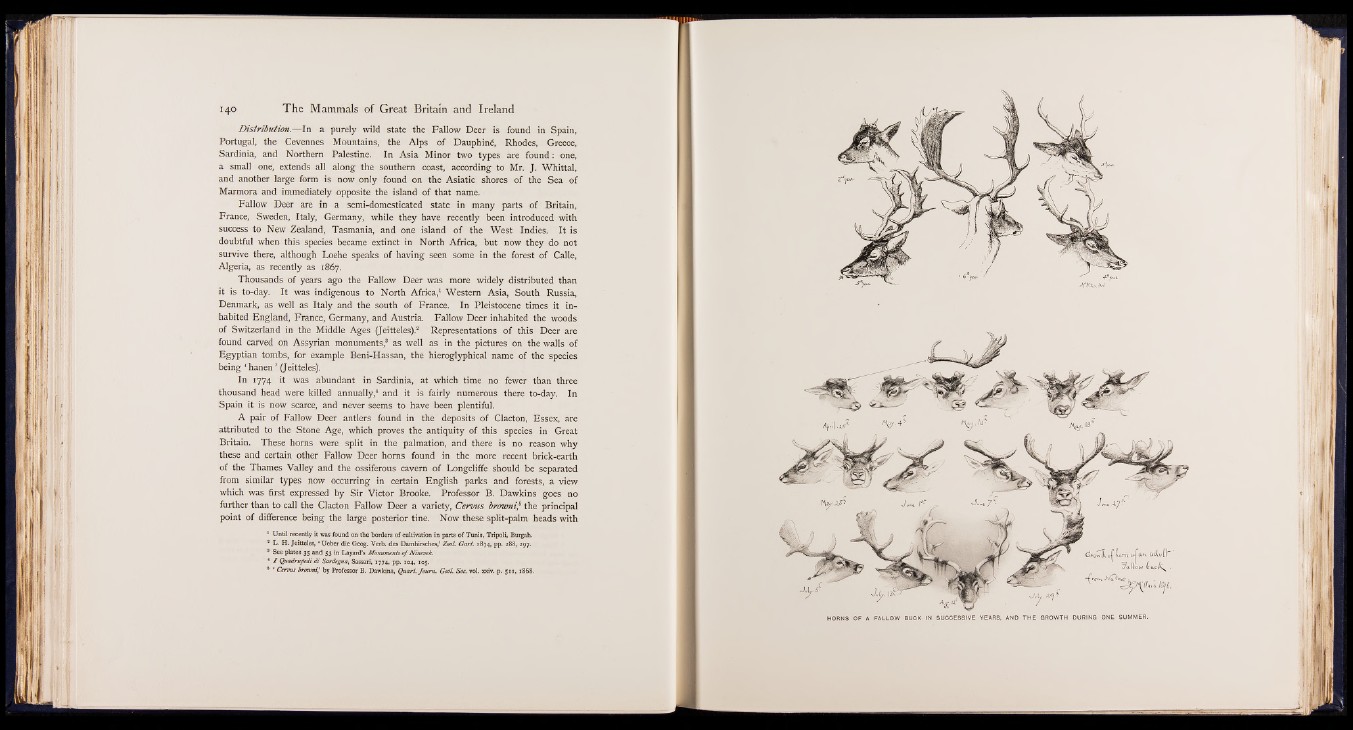
Distribution.— In a purely wild state the Fallow Deer is found in Spain,
Portugal, the Cevennes Mountains, the Alps of Dauphiné, Rhodes, Greece,
Sardinia, and Northern Palestine. In Asia Minor two types are found : one,
a small one, extends all along the southern coast, according to Mr. J. Whittal,
and another large form is now only found on the Asiatic shores of the Sea of
Marmora and immediately opposite the island of that name.
Fallow Deer are in a semi-domesticated state in many parts of Britain,
France, Sweden, Italy, Germany, while they have recently been introduced with
success to New Zealand, Tasmania, and one island of the West Indies. It is
doubtful when this species became extinct in North Africa, but now they do not
survive there, although Loehe speaks of having seen some in the forest of Calle,
Algeria, as recently as 1867.
Thousands of years ago the Fallow Deer was more widely distributed than
it is to-day. It was indigenous to North Africa,1 Western Asia, South Russia,
Denmark, as well as Italy and the south of France. In Pleistocene times it inhabited
England, France, Germany, and Austria. Fallow Deer inhabited the woods
of Switzerland in the Middle Ages (Jeitteles).2 Representations of this Deer are
found carved on Assyrian monuments,8 as well as in the pictures on the walls of
Egyptian tombs, for example Beni-Hassan, the hieroglyphical name of the species
being ‘ hanen ’ (Jeitteles).
In 1774 it was abundant in Sardinia, at which time no fewer than three
thousand head were killed annually,4 and it is fairly numerous there to-day. In
Spain it is now scarce, and never seems to have been plentiful.
A pair of Fallow Deer antlers found in the deposits of Clacton, Essex, are
attributed to the Stone Age, which proves the antiquity of this species in Great
Britain. These horns were split in the palmation, and there is no reason why
these and certain other Fallow Deer horns found in the more recent brick-earth
of the Thames Valley and the ossiferous cavern of Longcliffe should be separated
from similar types now occurring in certain English parks and forests, a view
which was first expressed by Sir Victor Brooke. Professor B. Dawkins goes no
further than to call the Clacton Fallow Deer a variety, Cervus broTvni,6 the principal
point of difference being the large posterior tine. Now these split-palm heads with
1 Until recently it was found on the borders of cultivation in parts of Tunis, Tripoli, Burgah.
* L. H. Jeitteles, ‘ Ueber die Geog. Verb, des Damhirsches,’ Zoo/. Gart. 1874, pp. 288, 297.
a See plates 35 and 53 in Layard’s Monuments o f Nineveh.
* J Quadrupeds d i Sardegna, Sassari, 1774, pp. 104, 105.
5 ‘ Cervus browni,' by Professor B. Dawkins, Quart. Journ. Geol. Soc. vol. xxiv. p. 511, 1868.